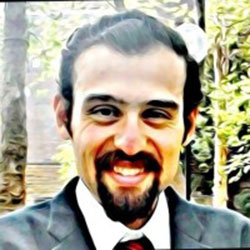Battling The Dark Side Of Authentic Leadership
By Mostafa Sayyadi & Michael J. Provitera
One vital step to defining leadership is to discern between leadership and management. A prominent scholar by the name of Warren Bennis in his book, On Becoming a Leader, identified the difference between leadership and management. He asserts that leaders acquire their competencies through education, while managers become familiar with management practices through training.
A Harvard scholar by the name of Bill George explains authentic leaders as those managers who “recognize their shortcomings and work hard to overcome them. They lead with purpose, meaning, and values. They build enduring relationships with people. Others follow them because they know where they stand. They are consistent and self-disciplined. When their principles are tested, they refuse to compromise.”
Authentic leadership provides prescriptive and anecdotal applications that leaders and supervisors can grasp. It is straightforward and uses a variety of guidelines for both leaders and followers alike.
Seven elements have been determined for the authentic leadership model
- Positive psychological capital: The first element refers to the idea that authentic leaders develop a positive work climate in which followers more effectively contribute to a firm’s performance and competitive advantage.
- Positive moral perspective: The second element is about the authentic decision-making process, which identifies moral dilemmas, and then evaluates and selects the best available alternative to be implemented.
- Self-awareness: In the third element, authentic leaders continually understand their own unique talents, strengths, sense of purpose, core values, beliefs, and desires.
- Leadership process/behavior management: The fourth element relates to distinguishing the processes and mechanisms whereby an authentic leader influences his/her followers. Authentic leaders can effectively influence their followers through various processes such as a positive social exchange.
- Self-regulation: The fifth element is self-awareness and self-regulation by which authentic leaders align their values with their interactions and actions. In this element, a strong alignment can be achieved in values and goals by using a transparent process between leaders and followers.
- Follower development: Then, in the sixth element, an authentic leader takes a coaching role in transforming and developing people.
- Organizational context: Finally, authentic leaders develop effective workplaces that provide open access to information, resources, support, and equal opportunity for everyone to learn and develop in order to actively respond to the constant changes occurring in the external environment.
Still, Authentic Leadership cannot evade criticism.
For example, the foundations of authentic leadership are somewhat vague and lack attention to how an authentic leader can adapt to every situation and present different faces to different followers while remaining authentic.
Also, authentic leadership can be challenged in terms of its theoretical foundations and approach to adapting people to the collective. For example, this leadership model has failed to consider the fact that each person is full of contradictions.
In addition, authentic leadership can be critiqued for the lack of a theoretical rationale by which the essential role of social and historical factors can be justified. Similarly, a prominent Ivey Business School scholar by the name of Rita Gardiner posits that “authentic leadership is deeply problematic because it fails to take into account how social and historical circumstances affect a person’s ability to be a leader.”
Conclusion
For a leader to be completely authentic, telling the truth is not always easy. Therefore, is being an Authentic Leader a good thing? Yes. Does it work in every situation? No. Should a leader know about it and consider being as authentic as possible when determining his or her strengths and weaknesses? Yes.


Mostafa Sayyadi works with senior business leaders to effectively develop innovation in companies and helps companies—from start-ups to the Fortune 100—succeed by improving the effectiveness of their leaders. In recognition of his work with Australian Institute of Management and Australian Human Resources Institute, Mostafa has been awarded the titles, “Associate Fellow of the Australian Institute of Management” and “Senior Professional in Human Resources”.
Michael J. Provitera is an international management consultant. He received a B.S. with a major in Marketing and a minor in Economics at the City University of New York in 1985. In 1989, while concurrently working on Wall Street as a junior executive, He earned his MBA in Finance from St. John’s University in Jamaica, Queens, New York. He obtained his DBA from Nova Southeastern University. Michael is quoted frequently in the national media.